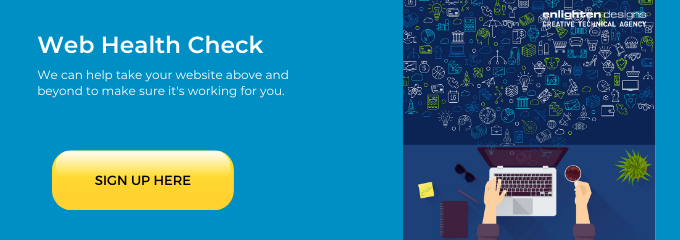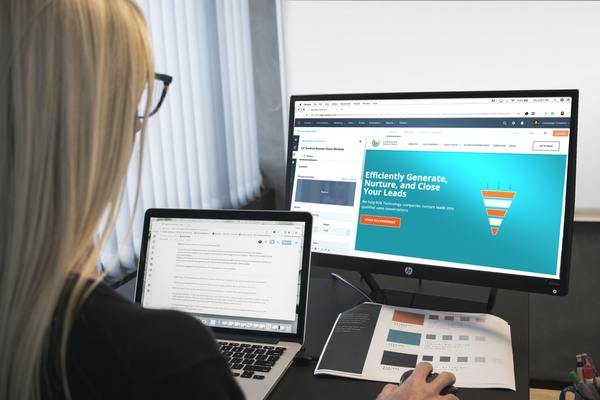Common CMS Security Risks
Your CMS is vulnerable to a number of security threats. Many CMSes are built on an open-source framework, meaning that the source code is freely available. As a result, programmers can easily modify it. However, the benefits of open source frameworks must be weighed against some considerable drawbacks. Open-source frameworks aren’t maintained to the same extent as proprietary software. No one puts out patches for open source CMSes, meaning a vulnerability could arise, and you wouldn’t be able to protect yourself.Open source frameworks create CMS security risks.
Additionally, human error also heightens CMS security risks. For example, some website administrators don’t use strong passwords, leading to successful brute force attacks on behalf of hackers. Moreover, if you don’t change the default admin username and password (or even just the username), hackers have an easier time infiltrating your CMS.
Sometimes, the vulnerabilities aren’t within the CMS itself but within integrated solutions such as themes, plugins, and modules. If you don’t fix those vulnerabilities quickly, your CMS becomes an attractive target for hackers.
What Kinds of Attacks Do Hackers Carry Out Against CMSes?
There are a number of attacks hackers tend to carry out against CMSes:
- Brute force attacks
- SQL injection
- Cross-site scripting
- DDoS attack
- File inclusion exploits
- Directory traversal
Brute Force Attacks
During a brute force attack, a hacker uses a trial-and-error method of entering a combination of usernames and passwords until he can infiltrate the CMS. A hacker doesn’t even need to do this manually; he can program bots to do it for him.
Weak passwords make brute force attacks quite successful. Even if the attack fails, it can still cause you problems. Too many login attempts slow down your website and overload your system. Some hosts might even suspend your account due to system overload.
SQL Injection
An application (such as a CMS) queries a database. An SQL injection (when a hacker injects malicious code into query fields) interferes with that process. It gives the hacker access to information they shouldn’t be able to see, as well as the ability to modify the data, so the application acts differently. After a successful SQL injection, the hacker can create a new privileged user account, giving him access to the CMS.
Cross-Site Scripting
During cross-site scripting, a hacker injects malicious code into a legitimate application (such as a CMS). When a victim visits the application, the application becomes a vehicle to deliver that malicious code into the user’s browser. Hackers generally use cross-site scripting to steal user cookies so that they can impersonate that person online.

DDoS Attacks
When hackers flood a web server with a high volume of requests, that’s a denial-of-service attack. It prevents users from accessing a system. A distributed denial-of-service attack (DDoS) attack utilises multiple machines known as botnets to inundate a system.
File Inclusion Exploits
Hackers can take advantage of the ability to upload files to a server to run a file inclusion exploit. The file they upload contains code that allows them to run attacks on the server.
Directory Traversal
A directory traversal (also known as a ../, or dot dot slash attack) gives hackers access to restricted files, directories, or commands outside of a server’s root directory. By accessing restricted information, the hacker gains the knowledge to compromise a system further.
How Can You Increase Your CMS Security?
There are a number of ways to increase your CMS security:
- Consider a decoupled or headless CMS
- Update software when patches and updates come out
- Create strong passwords and change default usernames
- Implement TLS
- Boost CMS security with two-factor authentication
Consider a Decoupled or Headless CMS
A decoupled and headless CMS separates the CMS authoring function (the frontend) from the publishing function (the backend). The biggest difference between decoupled and headless CMSes is that a headless CMS has multiple frontends.
Decoupled and headless CMSes give administrators greater control over the CMS and reduce vulnerabilities.
Update Software When Patches and Updates Come Out
Although it can be challenging to find software patches for open source CMSes, they do come out occasionally. Developers release updates more frequently; don’t ignore them or delay implementing them. These updates prevent dangerous CMS security threats.
Create Strong Passwords and Change Default Usernames
Don’t leave your admin username as ‘admin.’ It makes it easier for hackers to enter your system.
When it comes to passwords, use one that’s at least eight characters, a combination of non-sequential letters, numbers, special characters (such as ‘N3wze4land9526!’), and unique to that application (reusing passwords creates a web security risk).
Implement TLS
TLS stands for ‘transport layer security.’ It’s a popular website security protocol that protects communication travelling over the internet. TLS utilises encryption, meaning it cloaks information in an unbreakable code.
By implementing TLS, you’re taking a major step towards greater website security. There’s another benefit – Google trusts sites using TLS and will rank them higher than those that don’t use this form of web security.
Boost CMS Security with Two-Factor Authentication
Two-factor authentication (also known as 2FA) means that users must provide two authentication factors to verify their identities. In many cases, 2FA is based on something you have (like a code on your cell phone) and something you know (like your password).
2FA strengthens CMS security because unless a hacker steals your phone, they can’t log into the CMS with your password alone. That protects your CMS as well as your website from data breaches.
Secure Your CMS with Enlighten Designs
For over two decades, Enlighten Designs has delivered amazing, secure digital experiences to our customers. Our expertise in CMS security and website security enables us to keep your content and users safe from threats. To learn more about what steps you can take to protect your CMS and website, contact us.

